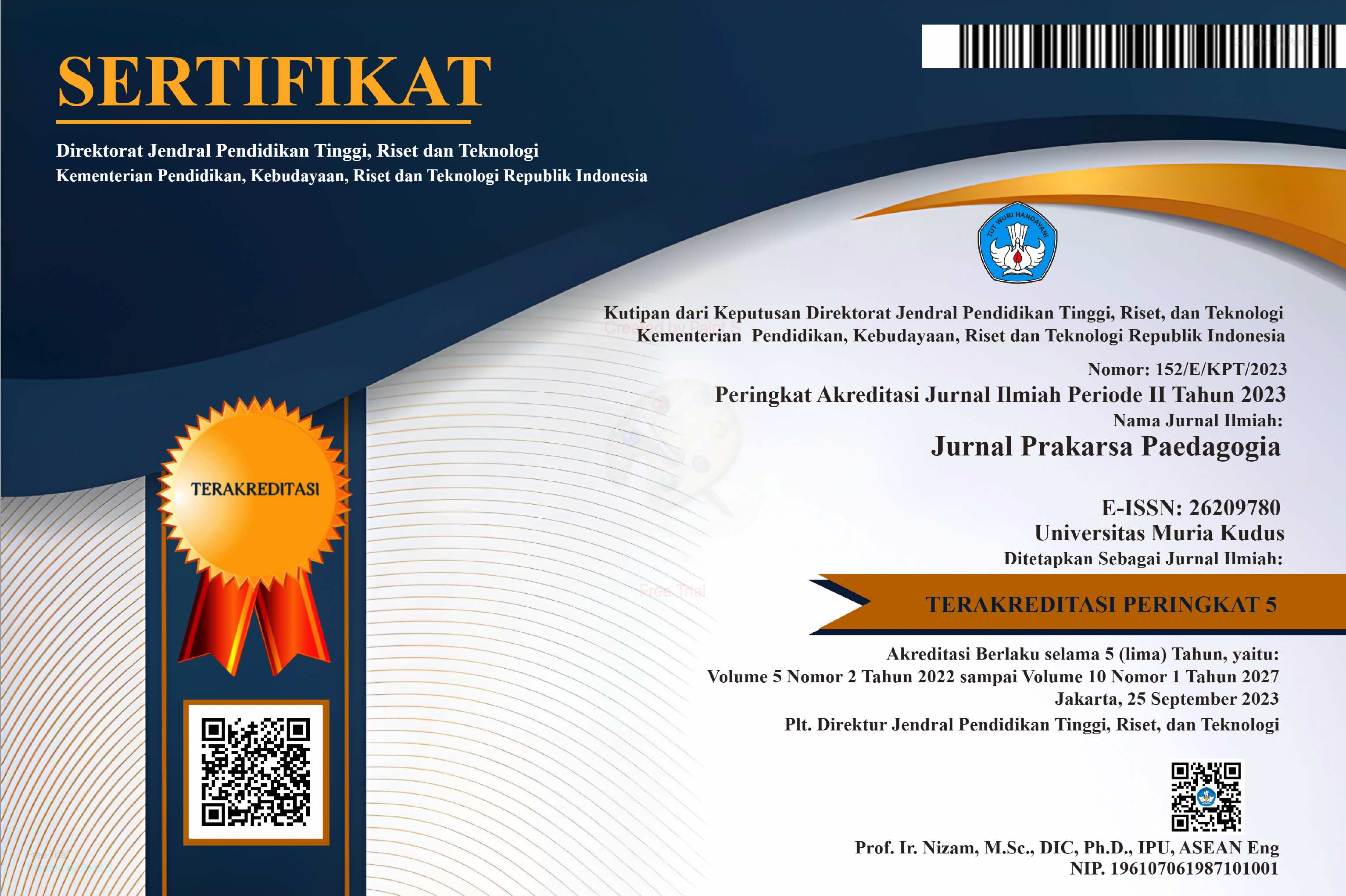Development Of Teaching Book For Dyslexia Children With Learning Style Intervention Assisted By Audio Visual Media At Elementary School
Abstract
Keywords
Full Text:
223-229 (Bahasa Indonesia)References
Abdurrahman, Mulyono. 2009. Pendidikan Bagi Anak Berkesulitan Belajar. Jakarta: PT. Rineka Cipta Rose Mini & Prianto (2003:156)
Abdurrahman, Mulyono. 2009. Pendidikan Bagi Anak Berkesulitan Belajar. Jakarta: PT. Rineka Cipta
Akbar, S. 2013. Instrumen Perangkat Pembelajaran. Bandung: PT Remaja Rosdakarya
Annie Magnan,et.al. The Effects of an Audio–Visual Training Program in Dyslexic Children. International Journal of Language and Communication. Disorders, 37(3), 289–308.
Asnawir,Usman Basyiruddin.2002. Media Pembelajaran, Ciputat Pers, Jakarta Selatan
DePorter, Bobbi dan Hernacki, Mike. 2013. Quantum Learning: Membiasakan Belajar Nyaman dan Menyenangkan. Bandung: Kaifa
Evangelos Tsampalas, et.al. Learning Paths And Learning Styles In Dyslexia: Possibilites And Effectiveness - Case Study Of Two Elementary School Students Aged 7 Years Old. European Journal of Special Education Research European Journal of Special Education Research - Volume 3 │ Issue 1 │ 2018 .ISSN: 2501 – 2428 ISSN-L: 2501 - 2428 Available on-line at: www.oapub.org/edu
Fajar Kawuryan, Trubus Raharjo.2012. Pengaruh Stimulasi Visual Untuk Meningkatkan Kemampuan Membaca Pada Anak Disleksia. Jurnal UMK Psikologi Pitutur. Volume 1 No.1, Juni 2012.
Febi Dwi Widayanti. Pentingnya mengetahui gaya belajar siswa dalam kegiatan pembelajaran di kelas. ERUDIO, Vol. 2, No. 1, Desember 2013. ISSN: 2302-9021
Hanif Nurul Arifah.2017.Pengembangan Multimedia Pembelajaran Interaktif Keterampilan Membaca Permulaan Siswa Disleksia Kelas III SDN Bangunrejo II YogyakartaE-Jurnal Prodi Teknologi Pendidikan Vol. VI Nomor 6 Tahun 2017
James Le Fanu, Deteksi Dini Masalah-masalah http://purwasetyawan.blogspot.co.id/2012/11/kenali-disleksia-sejak-dini.html. diakses pada 11 Feb 2017. 15.50. 2012-1-00569-ps bab 2.pdf. diakses pada 12 Oktober 2020
Leoziana. 2017. Urgensi Mengenal Ciri Disleksia. Jurnal UIN Ar- Raniry, 3 (2)
Majid, A. 2008.Perencanaan Pembelajaran: Mengembangkan Standar Kompetensi Guru Cetakanke -5. Bandung: PT Remaja Rosdakarya
Martini Jamaris. 2014. Kesulitan Belajar: Perspektif, Asesmen, dan Penanggulangannya. Bogor: Ghalia Indonesia
Sioned Exley. The effectiveness of teaching strategies for students with dyslexia based on their preferred learning styles. British Journal of Special Education Volume 30 Number 4 •2003
Sulistiyoningsih Astriani, R., Utaminingsih, S., & Surachmi, S. (2021). Development of Ethno-mathematics based Mathematics Teaching Material Technology: A Needs Analysis. Journal of Physics: Conference Series, 1823(1). https://doi.org/10.1088/1742-6596/1823/1/012071
DOI: https://doi.org/10.24176/jpp.v5i1.8675
Refbacks
- There are currently no refbacks.
Copyright (c) 2022 Jurnal Prakarsa Paedagogia

This work is licensed under a Creative Commons Attribution-NonCommercial-ShareAlike 4.0 International License.
Visitors of the Paedagogia Prakarsa Journal Status
Country of Origin of Visitors:
Jurnal Prakarsa Paedagogia dari Fakultas Keguruan dan Ilmu Pendidikan Universitas Muria Kudus is licensed under a Creative Commons Attribution 4.0 International License.
Dedicated to:







